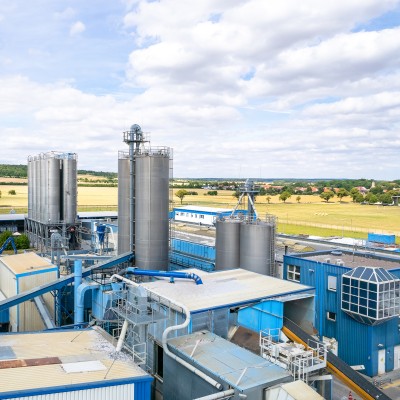
Towards net-zero
As a family-owned company, VEKA keeps the coming generations in mind and is committed to a climate-neutral value chain by 2045.
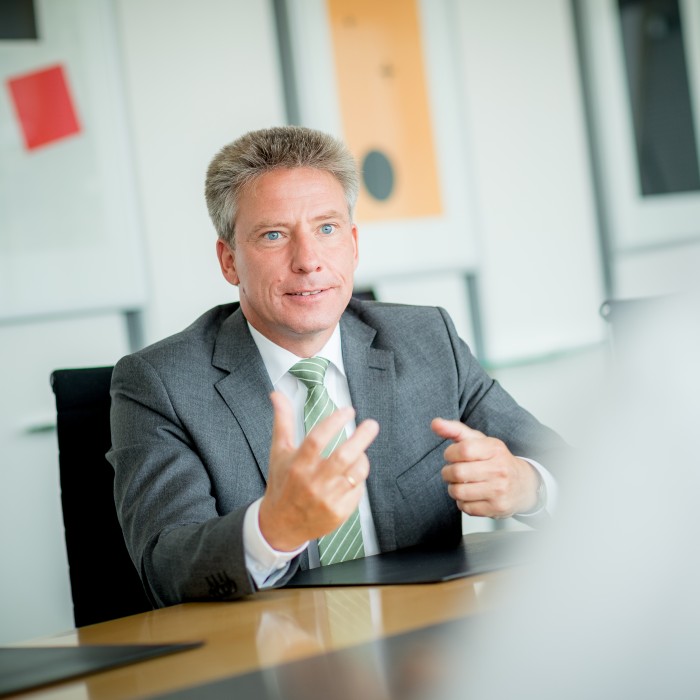
Net-zero goal by 2045
The VEKA Group has set itself a clear goal of climate neutrality: by 2045, the company group aims to operate in a climate-neutral manner across the entire value chain at all locations and across all scopes.
In order to limit global warming to 1.5°C compared to pre-industrial levels, almost all countries in the world agreed to reduce their carbon dioxide emissions to net zero by 2050 as part of the 2015 Paris Agreement. The German government is going one step further and has anchored the goal of greenhouse gas neutrality for Germany by 2045.
We as a company also want to achieve greenhouse gas neutrality by 2045. As the construction sector is one of the most emission- and resource-intensive industries, we can actively contribute to achieving the global climate protection goals.
Our current measures include improving energy efficiency, using renewable energy through in-house production and purchasing green electricity, as well as reducing CO₂ emissions from our products through the use of recycled materials.
In 2022, we prepared and certified our first Scopes 1 and 2 greenhouse gas balance sheet for 2021. With this, we have recorded the first part of our emissions. Since then, we have been recording our Scope 1 and 2 emissions annually and plan to fully determine our Scope 3 emissions by the end of 2025.
By the end of 2025, we also want to join the Science Based Targets initiative (SBTi) to have our climate targets scientifically verified.
What are Scope 1, 2 and 3?
The classification of emissions into Scope 1, 2 and 3 helps companies to better understand and manage their total greenhouse gas emissions. Scope 1 emissions are all direct emissions resulting from a company's activities on site, such as fuel for company vehicles. Scope 2 emissions are indirect emissions from the consumption of purchased energy, such as electricity or heat. Scope 3 emissions include all other indirect emissions generated by a company's activities in its value chain, such as business travel or the use of products sold.
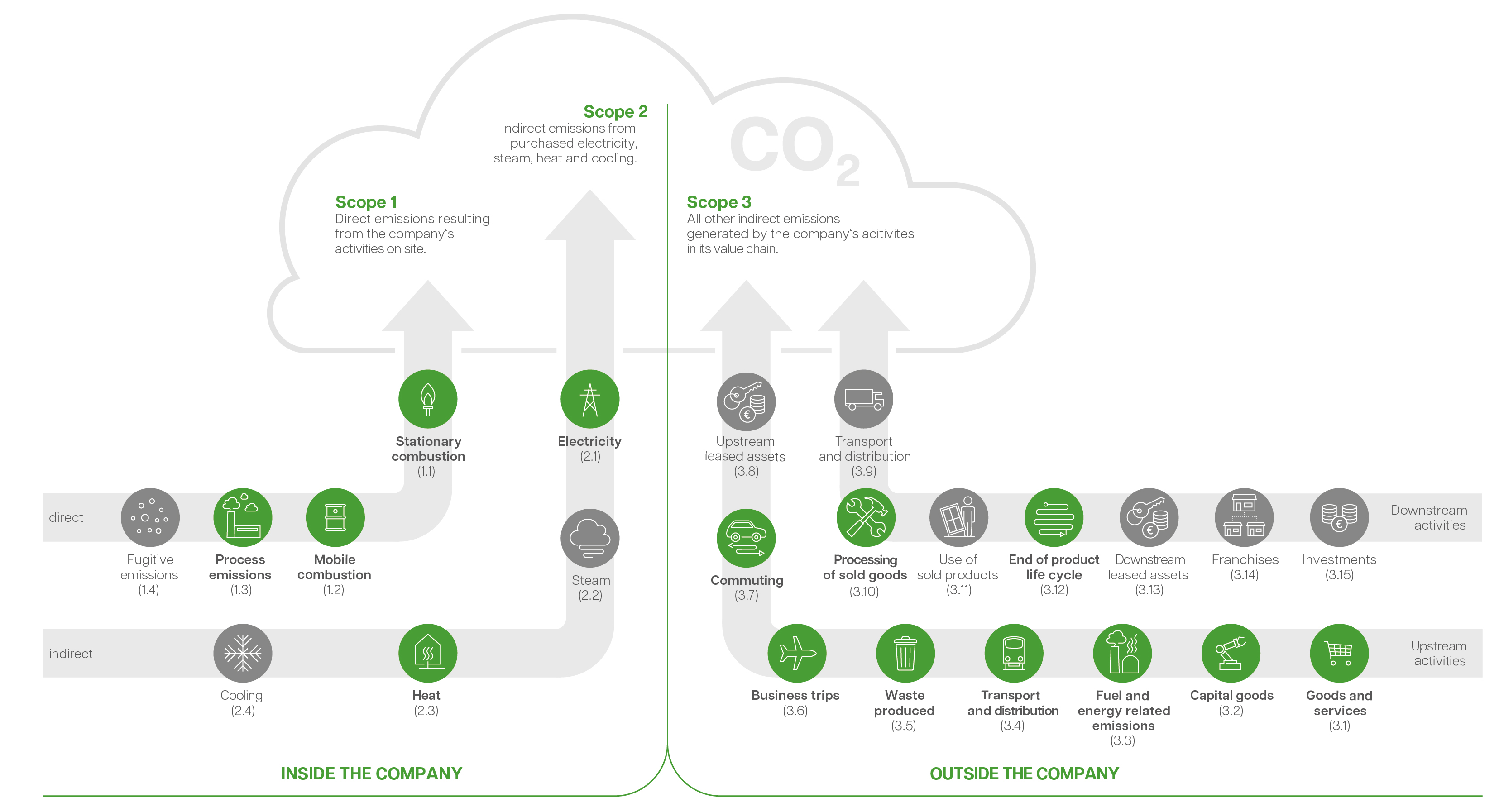
Focusing on Scope 3
We know that Scope 3 will account for the majority of our emissions. Since these emissions are directly linked to our value chain, we can only achieve changes in collaboration with suppliers and customers, which significantly increases effort and complexity.
Since 2024, we have been working on the foundations for the initial calculation of Scope 3 emissions. This includes developing the data basis, gathering information from the supply chain, defining emission factors and calculation methods. Already today, we can estimate that categories such as procurement and transportation will play a significant role in our Scope 3 calculations.
In general, avoiding and reducing emissions is our preferred approach and our first choice. We only want to use compensation measures when emissions cannot (yet) be avoided. These measures, if necessary, will be transparently disclosed and are not equivalent to reduction measures.
Facing the challenges
In preparation for our mandatory reporting in the future, we will report on the status of emissions in accordance with SBTi guidelines and present our measures and targets in a detailed reduction plan. The prerequisite for this is the complete recording of our Scope 1 to 3 emissions, which we are currently working on intensively.
In general, one of the biggest challenges is also one of the most important levers for our emission reduction: the conversion of the fossil plastic polyvinyl chloride (PVC) in our products to more sustainable alternatives. The transformation of our product portfolio is also the key to a climate-neutral supply chain. We are currently testing the use of bio-attributed PVC and alternative raw materials in combination with recycled materials.
Embedding CSR in our corporate strategy
Our Corporate Strategy 2025 provides the VEKA Group with a common understanding of why we do what we do (we care), how we do things (we act) and what we want to achieve (we grow). Our goals and initiatives help us to act in a future-friendly manner.
Strategy development at VEKA follows a clearly defined process, and corporate responsibility is one of its central building blocks.
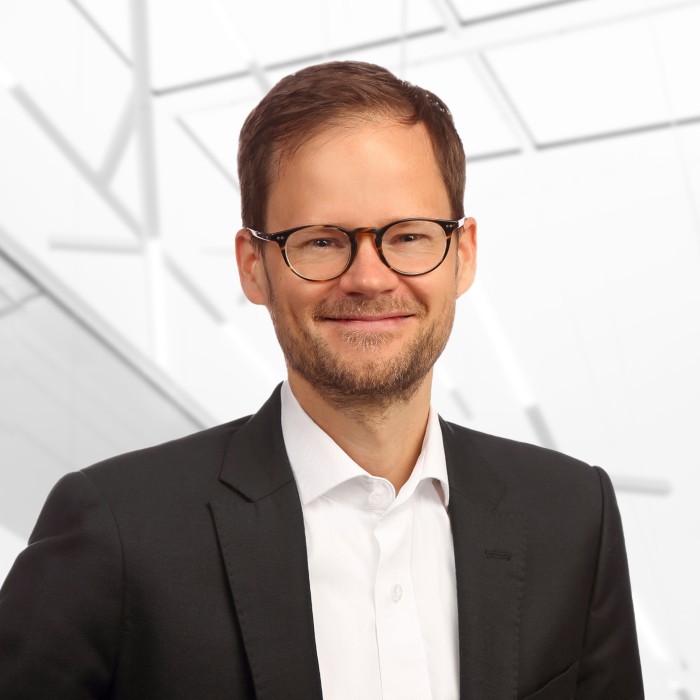
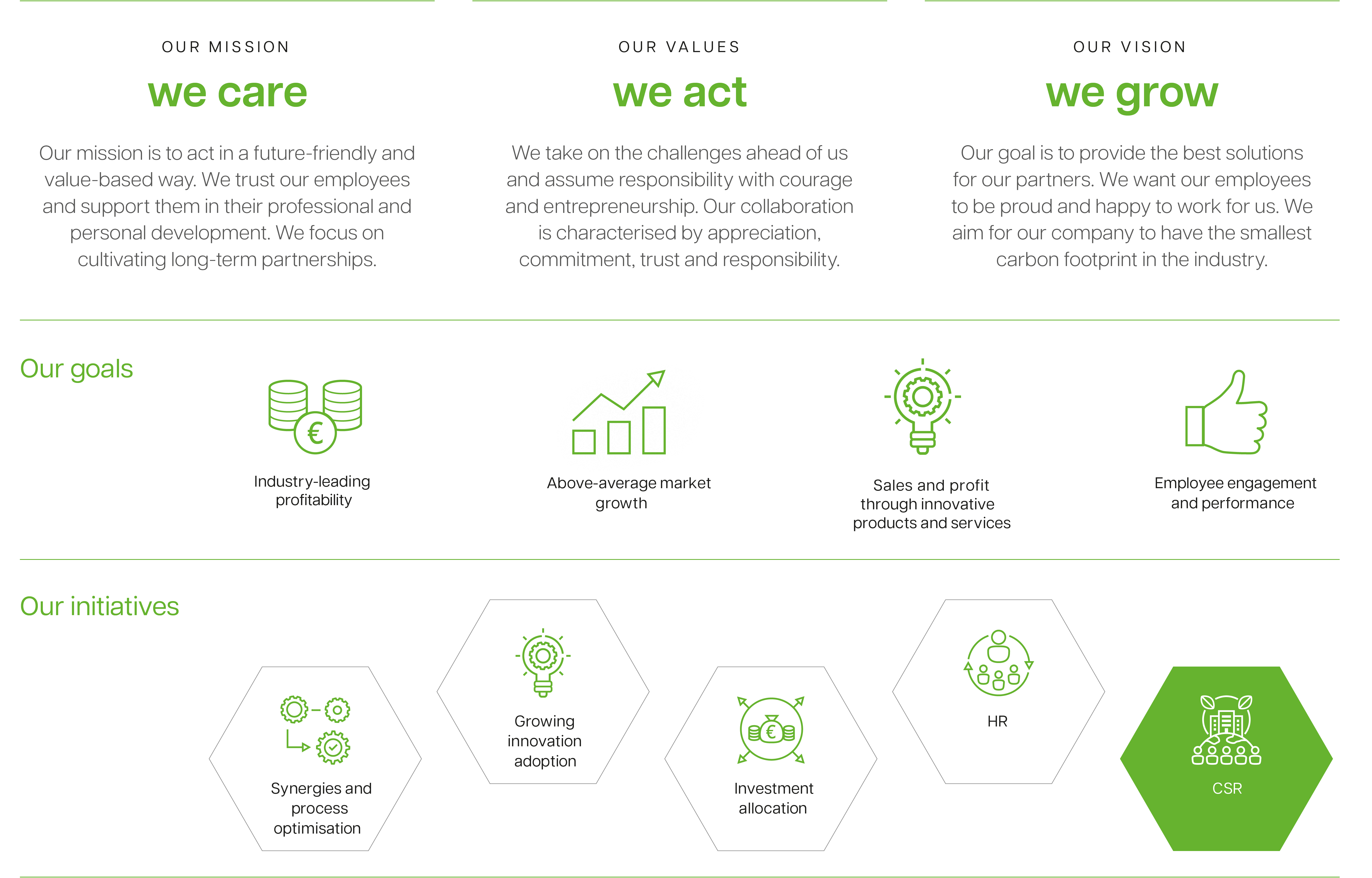
CSR Management
1 | Organisation: We have set up our own CSR organisation to meet both external CSR requirements and our internal commitment to sustainable management. Afterwards, we defined and appointed group-wide specialists responsible for the various CSR areas.
2 | Data and transparency: We collect all relevant key figures throughout the Group in accordance with the ESRS standards.This data is used to define improvement targets. We are constantly working to improve data quality and further automate the process.These data form the basis for management and future reporting.
3 | Reporting: We report regularly on our CSR activities. This is to show our progress and to highlight the relevance of sustainability – in its social, environmental and economic dimensions. With the future reporting requirement, we will integrate CSR issues into our annual report to a greater extent.
4 | Improvement: By improving data quality and CSR reporting, and by appointing CSR specialists, we are continuously working to better our sustainability performance. On the basis of improved data, we aim to develop targets for each area, including achieving group-wide carbon neutrality (Scopes 1, 2 and 3) by 2045.
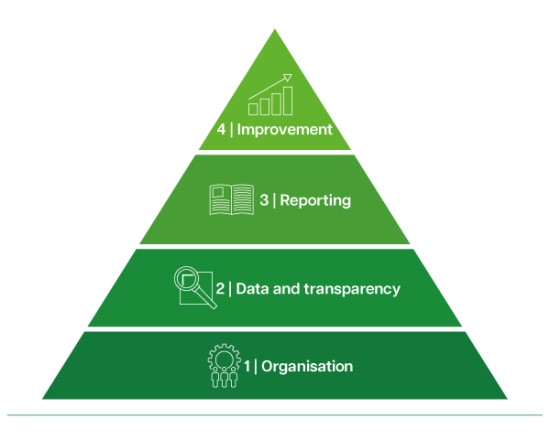
Double Materiality Analysis
As part of the Corporate Sustainability Reporting Directive (CSRD) we will be legally required to conduct sustainability reporting starting in the future. This means that in our annual management report we will include not only financial, but also non-financial information on environmental, social, and governance (ESG) aspects. To identify the ESG topics relevant to us, we conducted an initial materiality analysis for the entire Laumann Group in 2023.
The European Sustainability Reporting Standards (ESRS) define all relevant sustainability topics for companies. Using the materiality analysis, each company can determine, which topics have the greatest impact or are of the greatest financial significance.
The following materiality matrix was developed for the Laumann Group:
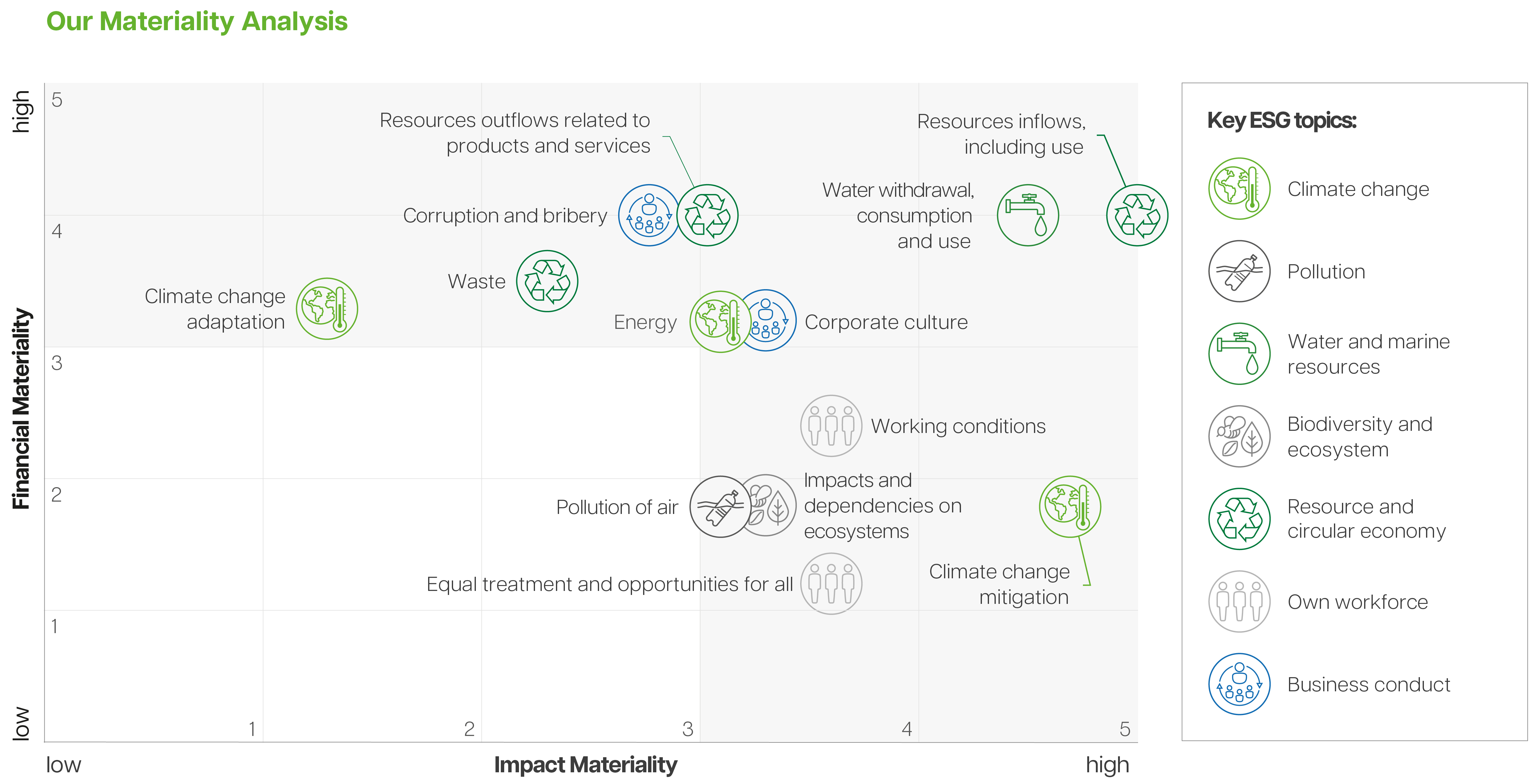
Understanding climate risks
In 2024, we began conducting systematic climate risk and opportunity analyses at selected sites. The goal is to strategically prepare for potential consequences of climate change at our locations worldwide. Climate risks are not just an environmental issue - they affect the future viability of our business model.
At the core is the structured identification, assessment, and prioritization of climate-related risks and opportunities. We differentiate between physical and transitional climate risks and opportunities. Based on the results of these analyses, we develop site-specific adaptation solutions to increase our resilience to physical and transitional changes and to act proactively.
Outlook
Using various key figures, we are currently capturing the status quo to subsequently derive improvement measures and targets. Since we know from the materiality analysis which areas have the greatest leverage for us, we can take effective measures in the future and thus contribute to a sustainable economy in the long term, reducing the negative impacts of our operations.